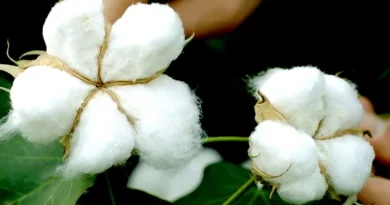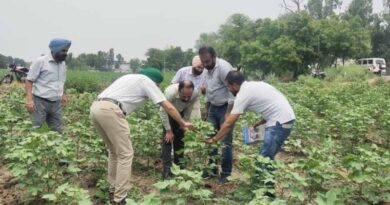Advisory for cotton farmers of Rajasthan from CICR
23 July 2022, New Delhi: ICAR’s Central Institute of Cotton Research has released advisory for cotton farmers of Rajasthan for cotton crop.
In southern Rajasthan (Banswara, Bhilwara, Chittorgargh, Dungarpur, Pratapgarh, Rajsamand and Udaipur), sowing is almost complete. The sown crop is about 15 to 21 days old. Intercultural operation must be done. No incidence of pests and diseases has been observed.
At Sriganganagar, the crop is 28 to 80 days. Post sowing irrigation has been given to the sown fields. Some fields have weed infestations in them. Jassid observed @10.00 to 51.00/ leaves, whitefly incidence 10.00 to 51.00/ leaves and thrips population observed in the range of 2.00 to 11.00/leaves. Occurrence of Cotton leaf curl disease (CLCuD) (PDI 5-7 %) disease have started appearing in the fields.
Advisory:
At Sriganganagar, farmers are advised to apply recommended dose of nitrogenous fertilizers after first and second irrigation to get maximum fertilizer use efficiency.
Remove weeds near and around the cotton fields. Avoid application of nitrogen through broadcast just before irrigation as this leads to leaching of fertilisers and in turn contamination of groundwater.
A total of 27.5 kg/acre urea in three splits must be given i.e. first at basal, second after first irrigation and third during square formation. Give foliar application of KNO3 @ 2% to the crop at 65 DAS. Monitor the crop for insect pests and disease regularly.
The locations where pink bollworm infestation was found last year to be monitored closely for PBW infestations. Install pheromone trap @ 5/ha to monitor their activity. Spray neem-based insecticides @ 5 ml/litre of water to control sucking pests and PBW. Spray Flonicamid 50 WG @ 0.40 gm/ litre of water for jassid and whitefly control. Pryriproxyfen 10 EC @ 2.5 ml/litre or Spiromesifen SC @ 1.00 ml/ litre of water should be applied whenever whitefly nymphal population crosses ETL. Spray Spinetoram 11.7 SC @ 0.8 ml/litre or Profenophos 50 EC @ 2 ml/ litre or Emamectin benzoate 5 SG@ 0.50 gm/litre against pink bollworm.
Also Read: China: Measures counter food security risks













